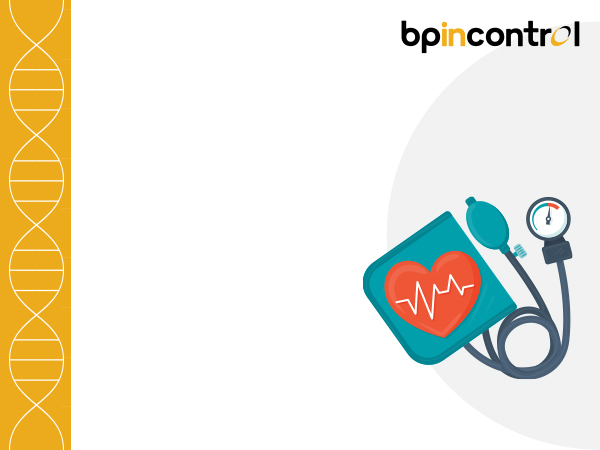Metabolic Syndrome: Causes, Symptoms, Diagnosis & Treatment

Table of Contents
What is Metabolic Syndrome?
Metabolic syndrome refers to a cluster of conditions that occur together, increasing the risk of developing heart diseases, stroke, and type 2 diabetes. These conditions include diabetes and blood pressure, excess body fat around the waist, and abnormal cholesterol or triglyceride levels.
Individuals with metabolic syndrome often exhibit a combination of these risk factors, and the presence of three or more of them is generally used to diagnose the syndrome. The exact cause of metabolic syndrome is not fully understood, but it is believed to result from a combination of genetic and environmental factors, such as poor diet, sedentary lifestyle, obesity and hypertension.
Causes of Metabolic Syndrome
The development of metabolic syndrome can be attributed to a combination of genetic and lifestyle factors.
The following factors are known to play a role:
- Genetics: Certain genetic traits can increase the likelihood of developing metabolic syndrome. Family history of conditions like obesity, type 2 diabetes, and high blood pressure can increase the risk.
- Obesity and excess weight: Excess body fat, particularly around the abdomen, is a key risk factor for metabolic syndrome. Abdominal obesity is strongly associated with insulin resistance and other components of the syndrome.
- Insulin resistance: Insulin resistance occurs when the body’s cells become less responsive to the effects of insulin. This results in the body needing to produce more insulin to regulate blood sugar levels. Over time, the increased insulin production can lead to elevated blood sugar levels and the development of type 2 diabetes.
- Sedentary lifestyle: Lack of physical activity and leading a sedentary lifestyle contribute to the development of metabolic syndrome. Regular exercise helps improve insulin sensitivity, aids in weight management, and reduces the chances of developing the syndrome.
- Unhealthy diet: Consuming a diet high in processed foods, refined carbohydrates, added sugars, and saturated fats increases the risk of metabolic syndrome. These dietary choices contribute to obesity, insulin resistance, high blood pressure, and abnormal lipid profiles.
- Hormonal imbalance: Hormonal imbalances, such as polycystic ovary syndrome (PCOS) in women, can increase the risk of metabolic syndrome. PCOS is associated with insulin resistance, obesity, and other metabolic abnormalities.
- Age: Metabolic syndrome becomes more common as you age.
It’s important to note that while these factors increase the risk of metabolic syndrome, not everyone with these risk factors will develop the condition.
Symptoms of Metabolic Syndrome
Metabolic syndrome often doesn’t cause any specific symptoms on its own. However, the individual components of metabolic syndrome may present certain signs and symptoms. These components include high blood pressure, high blood sugar levels, excess abdominal fat, and abnormal cholesterol or triglyceride levels. The following are the metabolic syndrome symptoms associated with each component:
- High blood pressure (hypertension): Hypertension itself usually doesn’t cause any symptoms. However, extremely high blood pressure may lead to physical symptoms such as headaches, dizziness, blurred vision, or shortness of breath.
- High blood sugar levels (hyperglycemia): In the early stages, hyperglycemia may not cause noticeable symptoms. However, as it progresses, symptoms may include increased thirst, frequent urination, fatigue, blurred vision, and slow wound healing. Severe hyperglycemia can lead to a medical emergency called diabetic ketoacidosis, characterised by abdominal pain, nausea, vomiting, and fruity-smelling breath.
- Excess abdominal fat: Abdominal obesity, often characterised by increased waist circumference, may not cause specific symptoms on its own. However, carrying excess weight around the waist is a visible sign that suggests an increased risk of metabolic syndrome and related health conditions.
- Abnormal cholesterol and triglyceride levels: Elevated cholesterol and triglyceride levels typically don’t cause noticeable symptoms. These abnormalities are often detected through blood tests. In some cases, high cholesterol levels can manifest as small yellowish deposits called xanthomas on the skin, particularly around the eyelids.
It’s important to note that the absence of symptoms doesn’t indicate the absence of metabolic syndrome. Many individuals with metabolic syndrome may be asymptomatic or experience only subtle symptoms.
Diagnosis & Treatment for Metabolic syndrome
Metabolic syndrome treatments involve a combination of lifestyle modifications, management of individual risk factors, and, in some cases, medication.
The following information outlines the common diagnostic approaches and metabolic syndrome treatments:
Diagnosis:
- Physical examination: A healthcare professional may conduct a thorough physical examination to assess factors such as waist circumference, blood pressure, and signs of insulin resistance (e.g., acanthosis nigricans – dark, velvety patches on the skin).
- Blood tests: Blood tests are performed to measure fasting blood sugar levels, lipid profiles (including total cholesterol, HDL cholesterol, LDL cholesterol, and triglycerides), and markers of inflammation. These tests help determine the presence of metabolic abnormalities associated with the syndrome.
- Additional tests: Depending on the individual’s specific circumstances, additional tests may be ordered to evaluate other potential risk factors, such as liver function tests or tests for hormonal imbalances.
Treatment:
- Lifestyle modifications: Lifestyle changes are essential for managing metabolic syndrome. These include:
- Weight management: Losing excess weight and maintaining a healthy weight through a balanced diet and regular physical activity.
- Healthy diet: Adopting a diet that emphasises whole grains, fruits, vegetables, lean proteins, and healthy fats while limiting processed foods, added sugars, and saturated fats.
- Physical activity: Engaging in regular exercise, such as aerobic activities and strength training, to improve insulin sensitivity, promote weight loss, and reduce blood pressure.
- Smoking cessation: Quitting smoking, as smoking increases the risk of cardiovascular complications.
- Managing individual risk factors: Addressing each component of metabolic syndrome is crucial. Depending on an individual’s specific needs, healthcare professionals may recommend interventions such as:
- Blood pressure control: Lifestyle changes, such as adopting a low-sodium diet, regular exercise, and weight loss, are often recommended. If necessary, medication may be prescribed to manage high blood pressure.
- Blood sugar management: For individuals with elevated blood sugar levels or diabetes, lifestyle modifications including dietary changes, weight loss, and regular physical activity are essential. Medications, such as oral antidiabetic drugs or insulin, may also be prescribed.
- Cholesterol and lipid management: Lifestyle modifications, including dietary changes and exercise, are often the first line of treatment. Sometimes, medication may be prescribed to help abnormal lipid levels come back to normal.
- Medications: In some cases, healthcare professionals may prescribe medications to help manage specific risk factors associated with metabolic syndrome, such as high blood pressure, elevated blood sugar, or abnormal lipid levels. Medications may be used alongside lifestyle modifications to achieve optimal control.
Regular follow-up visits with healthcare professionals are crucial to monitor progress, adjust treatment plans, and address any emerging concerns.
In a Nutshell
Metabolic syndrome is a cluster of conditions that significantly increase the risk of developing heart disease, stroke, and type 2 diabetes. Early diagnosis and appropriate management are crucial in reducing the risk of complications associated with this syndrome.
If you suspect you may have metabolic syndrome or have concerns about your health, it is important to consult with a qualified healthcare professional. They can provide an accurate diagnosis, assess your individual risk factors, and guide you on the most effective metabolic syndrome treatment plan tailored to your needs.
To find a physician near you who specialises in metabolic syndrome and related conditions, please visit our Find a Physician page. Taking the proactive step to consult with a knowledgeable healthcare provider can make a significant difference in managing your health and improving your overall well-being.
Remember, your health matters, and seeking expert guidance is essential for effectively managing metabolic syndrome.
FAQs
1. What are the 5 conditions of metabolic syndrome?
Metabolic syndrome is characterised by the presence of at least three of the following conditions:
a) Abdominal obesity: Excess fat around the waistline
b) High blood pressure: Elevated blood pressure levels
c) High blood sugar levels: Increased fasting blood glucose or impaired glucose tolerance
d) High triglyceride levels: Elevated levels of fats in the blood
e) Low HDL cholesterol: Low levels of “good” cholesterol
2. What is metabolic syndrome caused by?
Metabolic syndrome is caused by a combination of genetic and lifestyle factors. These factors include obesity, physical inactivity, unhealthy diet (high in processed foods and added sugars), insulin resistance, hormonal imbalances, and certain genetic predispositions.
3. Can metabolic syndrome be cured?
Metabolic syndrome cannot be “cured” per se, but its progression and associated complications can be effectively managed and even reversed through lifestyle modifications.
4. What foods cause metabolic syndrome?
Metabolic syndrome is often associated with diets high in processed foods, added sugars, refined carbohydrates, and saturated fats. These include sugary beverages, fast food, fried foods, processed snacks, sweets, and excessive consumption of red meat. It is important to prioritise whole foods, including fruits, vegetables, whole grains, lean proteins, and healthy fats, while limiting the intake of unhealthy processed and sugary foods.
5. How can I reverse my metabolic syndrome?
Reversing metabolic syndrome involves making positive lifestyle changes such as:
a) Adopt a balanced diet
b) Engage in regular physical activity
c) Achieve and maintain a healthy weight
d) Manage individual risk factors
e) Quit smoking
Disclaimer
The information contained in this article is to educate, spread awareness in relation to hypertension and other diseases to the public at large. The contents of this article are created and developed by BPinControl.in through its authors, which has necessary, authorisations, license, approvals, permits etc to allow usage of this articles on The Website. The views and opinions expressed in this article are views, opinions of the respective authors and are independently endorsed by doctors. Although great care has been taken in compiling and checking the information in this article, The Website shall not be responsible, or in any way liable for any errors, omissions or inaccuracies in this article whether arising from negligence or otherwise, or for any consequences arising therefrom. The content of this article is not a substitute for any medical advice. The Website shall not be held responsible or liable for any consequence arising out of reliance on the information provided in the article.


Comments (0)
No comments found.Add your comment